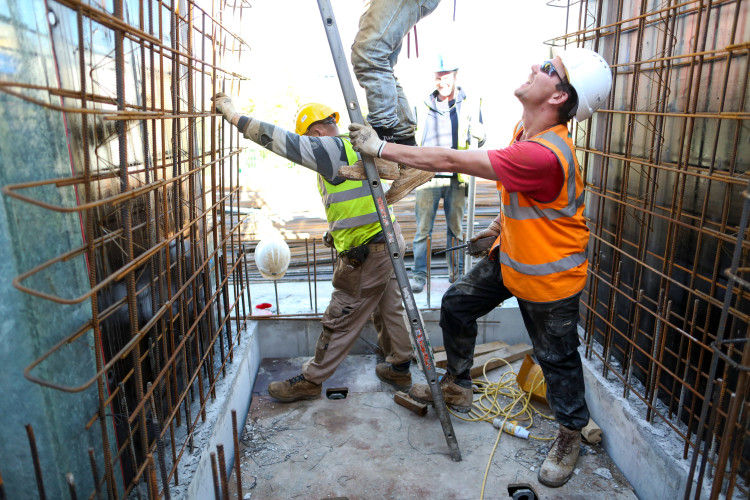Drone Applications in Construction- Aerial Surveying And Beyond

By
Drones have become an integral part of the construction industry, revolutionizing the way projects are planned, executed, and monitored. With their aerial surveying capabilities, drones provide construction professionals with a bird’s-eye view of the site, enabling them to gather accurate data and make informed decisions. This article explores how drones are transforming the construction industry and discusses the multitude of benefits they offer.
Drones have significantly transformed the construction industry, streamlining various processes and improving overall efficiency. One key area where drones have made a substantial impact is aerial surveying. Traditionally, surveying a construction site involved manual labor and time-consuming processes. However, with the advent of drones, this task has become faster, more accurate, and cost-effective.
The benefits of using drones for aerial surveying in construction
Using drones for aerial surveying in construction projects offers numerous benefits. Firstly, drones can access areas that are otherwise difficult or dangerous for humans to reach, such as tall buildings or unstable terrain. This allows for a comprehensive assessment of the site and reduces the risk of accidents. Additionally, drones equipped with high-resolution cameras and sensors can capture detailed images, enabling construction professionals to detect potential issues and make informed decisions based on accurate data.
Another advantage of using drones for aerial surveying is the significant time and cost savings. Traditional surveying methods often require multiple personnel and extensive manual labor. In contrast, drones can quickly cover large areas and collect data in a fraction of the time. This not only increases productivity but also reduces the overall project costs. Furthermore, the data collected by drones can be quickly processed and analyzed, eliminating the need for manual data entry and reducing the chances of human error.
Data analysis and processing techniques for aerial surveying with drones
Once drones capture the data, it must be processed and analyzed to derive meaningful insights. To achieve this, construction professionals utilize advanced data analysis and processing techniques. One such technique is point cloud data processing. Point cloud data is a collection of 3D coordinates that represent the surface of an object or terrain. By utilizing specialized software, construction experts can convert this point cloud data into a comprehensive 3D model, known as point cloud to BIM (Building Information Modeling).
Point cloud to BIM technology enables construction professionals to visualize the construction site in detail, identify potential clashes or conflicts, and optimize the project design. This technology provides an accurate representation of the site, allowing for better decision-making, improved collaboration, and enhanced project outcomes. Construction companies can significantly improve their efficiency and reduce errors by harnessing the power of drones and point cloud data processing.
While aerial surveys are undoubtedly valuable, drones offer construction professionals much more than just capturing data from above. They can also be used for virtual construction and design, taking the industry to new heights. With the integration of virtual reality and drone technology, construction companies can create immersive and interactive experiences for clients and stakeholders.
By utilizing drones to capture high-resolution imagery of the construction site, combined with Building Information Technology (BIM) and software, clients can virtually walk through the project before it is even built. This not only helps visualize the final outcome but also allows for real-time design modifications and improvements. Virtual construction and design with drones enable better communication, minimize errors, and enhance client satisfaction.
Using drones for capturing point cloud data, the new era of surveying
Drones have revolutionized surveying by capturing high-resolution imagery and precise data from previously inaccessible points. One groundbreaking application is the capture of point cloud data, which allows for efficient 3D modeling of buildings and landscapes. Drones equipped with LiDAR sensors and high-resolution cameras offer a faster and more comprehensive solution. As they fly over a site, they collect millions of data points, creating a detailed representation of terrain, structures, and objects below. This technology has revolutionized traditional surveying methods and is now used in conjunction with scan to BIM services.
Drones offer several advantages over traditional surveying methods, including the ability to access difficult-to-reach areas without scaffolding or climbing equipment, allowing for more comprehensive data collection and reducing safety risks. They can cover large areas in less time, resulting in significant time and cost savings. Once collected, the data is processed through Scan to BIM services, which use advanced software algorithms to generate accurate 3D models of buildings and structures. This process aligns and stitches together individual data points, creating a cohesive representation of the surveyed area with detailed geometric information.
Drone-captured 3D models are crucial for architects, engineers, and construction professionals, providing a detailed understanding of building conditions and enabling informed decision-making. These models help identify structural issues and optimize space utilization, contributing to more efficient and cost-effective project outcomes. The integration of drones in surveying has revolutionized the industry by offering speed, accuracy, and accessibility. By leveraging Scan to BIM services, this data can be transformed into detailed 3D models, making them invaluable assets in the design and construction industry. As technology advances, the use of drones for surveying is expected to become more prevalent.
Future trends in drone technology for construction
As technology continues to advance, the future of drones in the construction industry looks promising. One of the emerging trends is the use of artificial intelligence (AI) and machine learning algorithms in drone technology. AI-powered drones can autonomously detect and analyze objects on the construction site, such as equipment, materials, or even workers. This enables construction professionals to monitor safety, track progress, and identify potential risks in real time.
Another future trend in drone technology for construction is the development of swarm drones. Swarm drones are a group of drones that work together autonomously, performing tasks collectively. This technology has the potential to revolutionize construction processes, allowing for simultaneous data collection from multiple angles, faster inspections, and improved project coordination.
In conclusion, drones have become a game-changer.
in the construction industry, particularly in the field of aerial surveying. Their ability to provide accurate and detailed data from above has revolutionized the way construction projects are planned, executed, and monitored. With the benefits of time and cost savings, enhanced safety, and improved decision-making, drones have proven to be an invaluable asset to construction professionals.
Furthermore, the integration of advanced data analysis and processing techniques, such as point cloud to BIM, has further enhanced the capabilities of drones in construction. By harnessing the power of drones and embracing the future trends in drone technology, construction companies can stay ahead of the curve and achieve greater efficiency, productivity, and success.
So, it is time for the construction industry to fully embrace the future and leverage the aerial surveying capabilities of drones. By doing so, we can build a future where construction projects are safer, more efficient, and more environmentally friendly. Let’s take flight with drones and pave the way for a brighter future in construction.
sooperarticles.com







No Comment